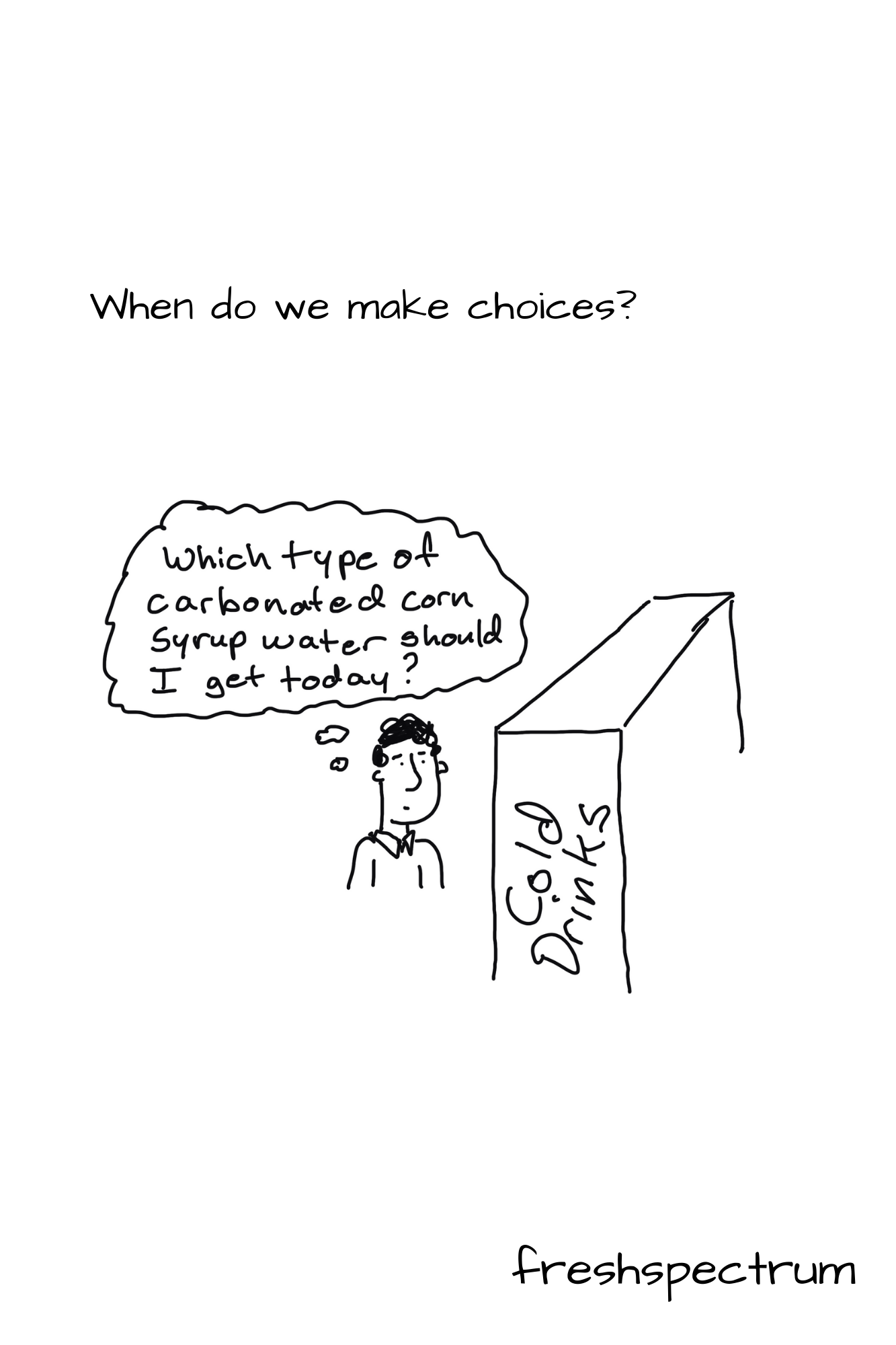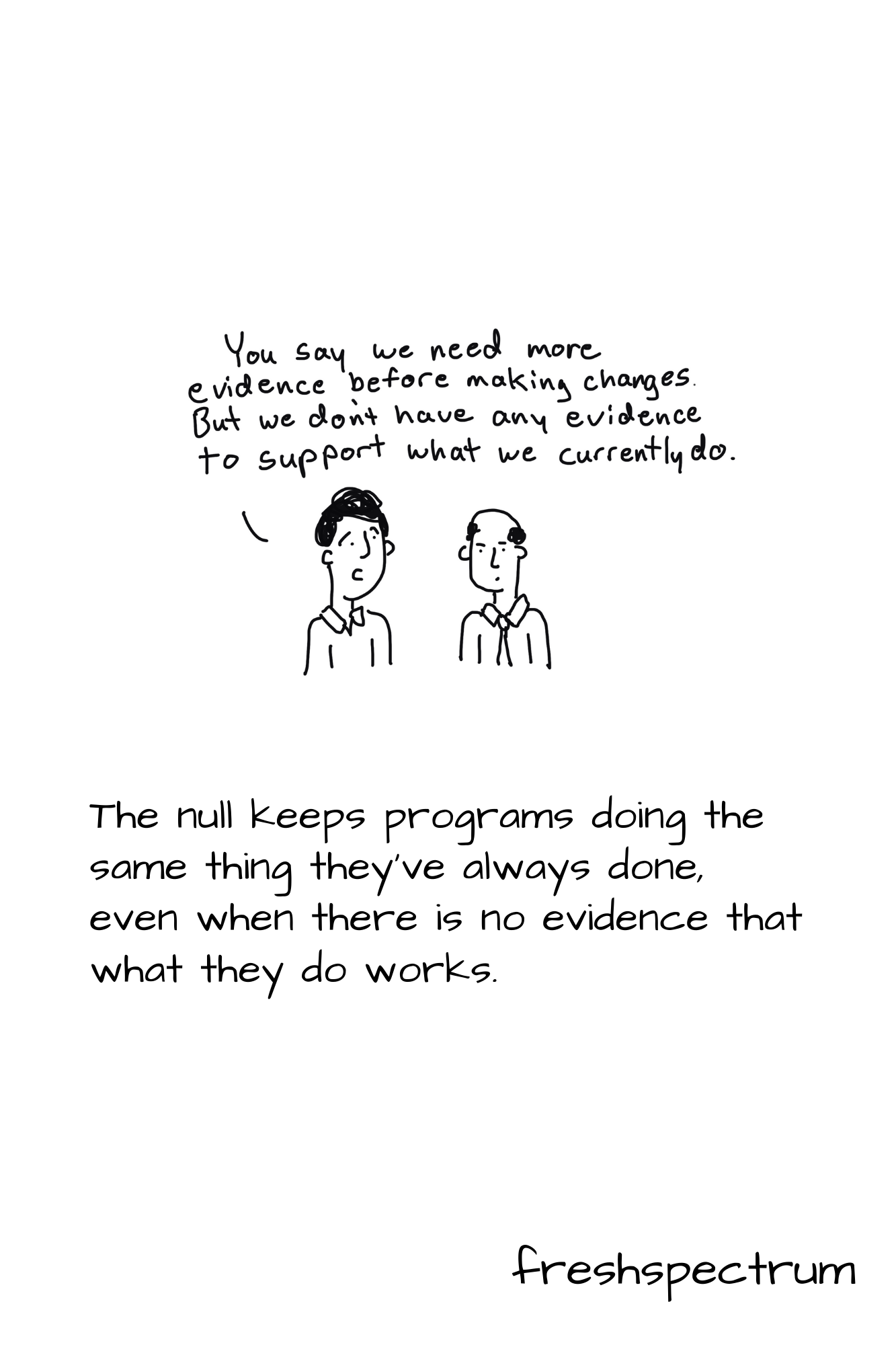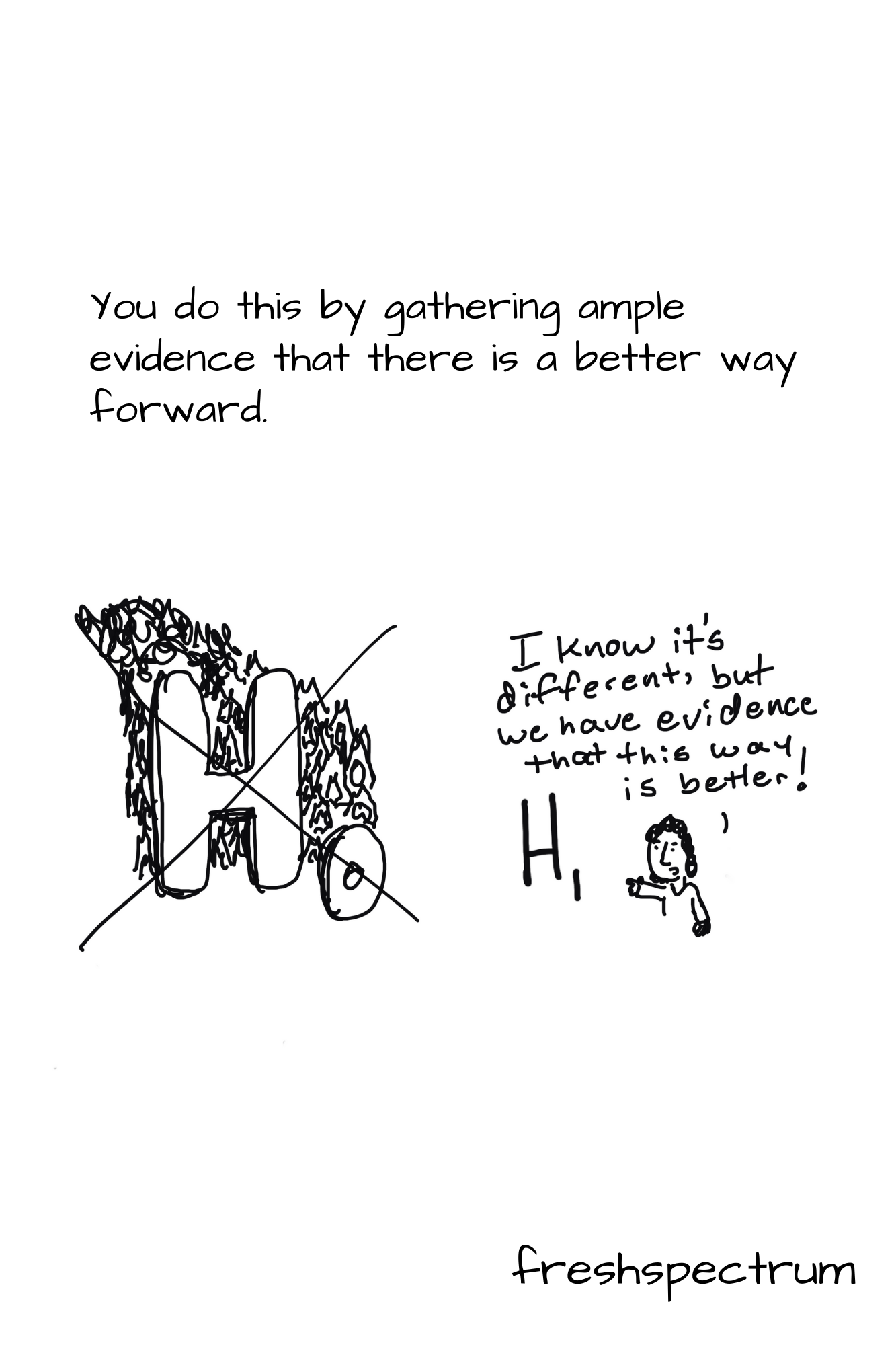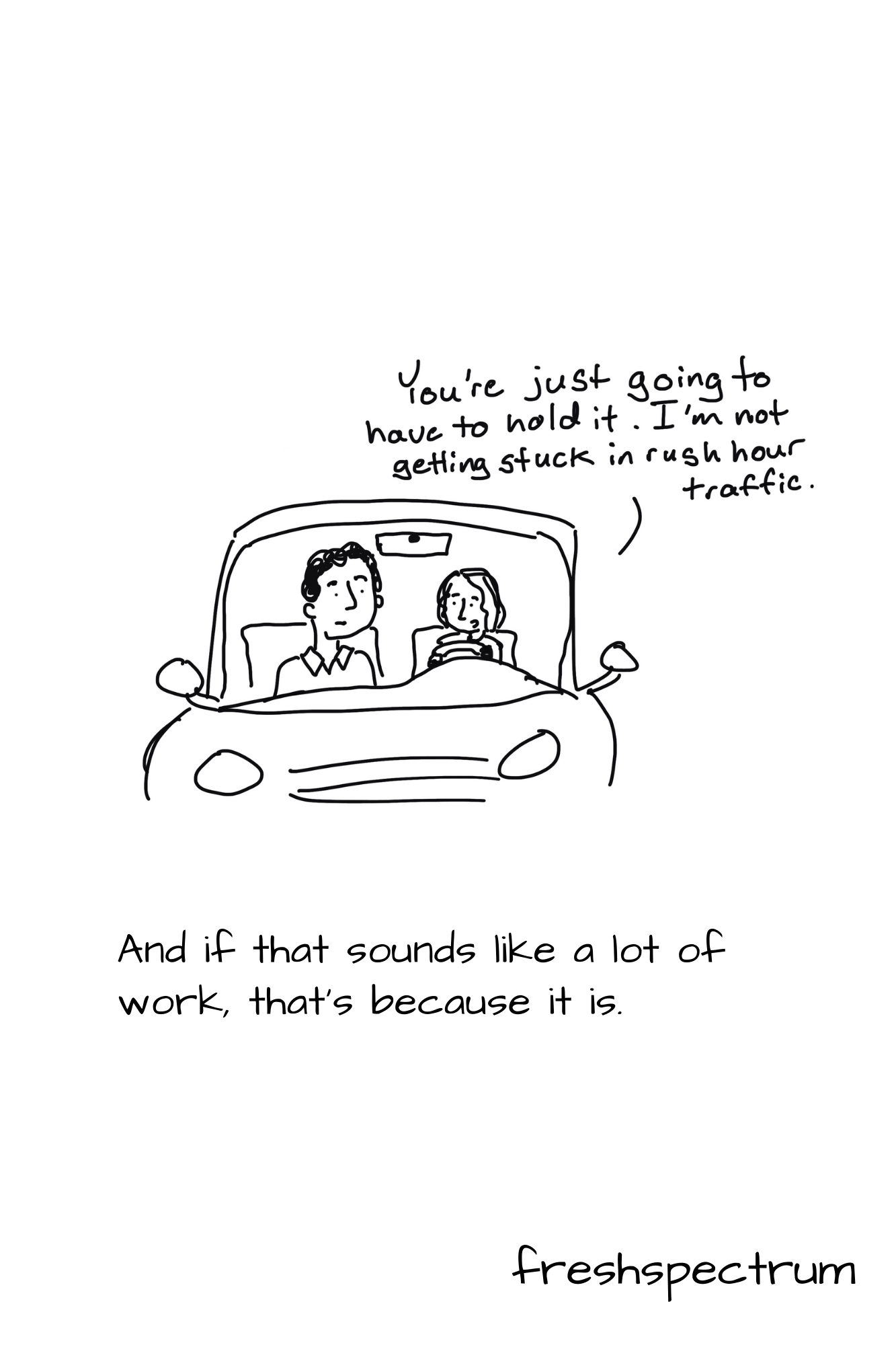This is an Eval Central archive copy, find the original at freshspectrum.com.
Today’s graphic novella is inspired by the concept of rejecting the null. I created a cartoon about the null hypothesis almost a decade ago.
I still find the concept really useful in thinking about evaluation. There is incredible power and importance in the choice that gets made when we don’t choose to change. So that’s the idea behind today’s story.

























Text Only Version
When do we make choices?
Is it at the proverbial fork in the road? The place where we choose between one of two options.
Do we carefully weigh the pros and cons then pick one way or the other?
Sometimes maybe, but most of the time, no.
Choice is not something that happens once and a while. Choice is a constant.
To use another metaphor. Imagine we’re on a highway.
At any moment, we could take an exit. Or we could simply stop the car and wait. Or maybe throw open the door, and venture into the spaces we would normally just pass by.
Usually we just continue to move forward, our constant choice is not leaving the highway.
As programs grow, they build momentum. The amount of momentum is based on their design, their funding, their people, and the type of problem they were created to solve.
A well designed program with momentum can ultimately deliver positive outcomes. A program on the wrong path can simply fail but it could also deliver destruction.
As momentum grows, the harder it becomes to change trajectory. To make a choice that is something other than just continuing to move forward in the same direction.
I call this idea the null.
The null is the status quo. It’s the choice we make by not choosing to do something else.
The null keeps programs doing the same thing they’ve always done, even when there is no evidence that what they do works.
The null gets reinforced by bureaucratic practices that can feel nonsensical, but are still just as hard to change.
The null let’s us off the hook, because it allows things to move forward without requiring additional mental effort or large scale change.
The null is not positive or negative. It’s not a superhero or supervillain.
The null is powerful just because it is what it is.
If you want to make change, you need more than just a better alternative to the null.
Most change is not the result of a fork in the road choice. It’s choosing an exit from the highway.
But before you choose an exit, you need to decide to leave the highway. It requires you to reject the null.
You do this by gathering ample evidence that there is a reason to not just keep moving forward on the same path.
And then you need to offer a better alternative.
You do this by gathering ample evidence that there is a better way forward.
Finally, you need to get the right people to see what you see.
And if that sounds like a lot of work, that’s because it is.